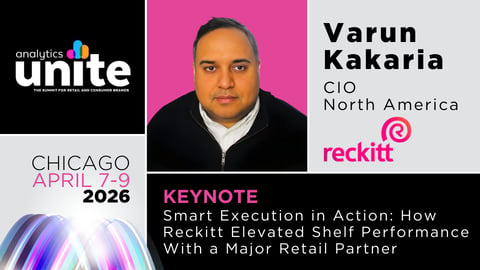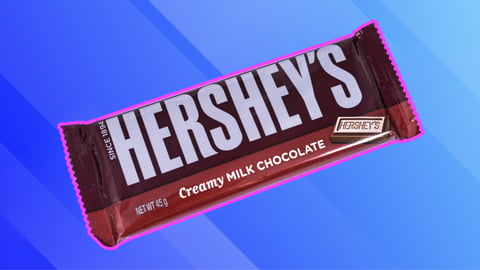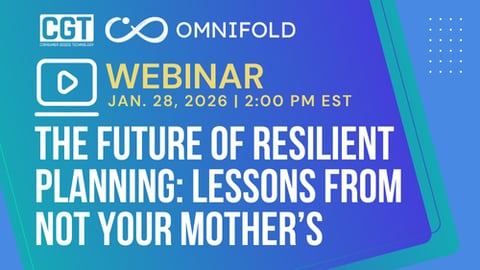2022 CPG Predictions: Mastering the Power of Data Revolution
In the last two years, the way people discover, shop for, and experience products has radically changed alongside new expectations that brands align to values consumers hold dear. In 2022 this industry will be tested like never before. I predict it will come out great.
There are many reasons why it's happening now, and one common way for companies to succeed and prosper: Master the data revolution.
At heart, the consumer packaged goods business is about brands, and today brands face all kinds of new challenges and opportunities. The COVID-19 pandemic has changed the way many of us live and shop forever, and digitally savvy consumers are constantly switching brands. Omnichannel consumption — the blended physical and digital consumption via services like mobile shopping, curbside pickup, or social shopping — put pressure on brands to innovate in how they market to consumers.
[See also: Top 100 Consumer Goods Companies]
Supply chain disruptions can mean stock shortages, making a brand seem unreliable. Materials shortages, longer lead-times and inflation mean cost pressures. And there are emerging challenges such as calls for greater transparency on things like a brand's sustainability practices and consumer data privacy.
What's a Brand To Do?
The first step to solving any challenge is to understand it, and understanding comes from measuring and analyzing with the best data possible. Fortunately, the same digital phenomenon behind many CPG disruptions is even better at creating and collecting data.
CPG companies have years of data about their own business, their products and partner relationships, and their customers. There are new sources of information about things like shipping and weather, and troves of public data. In 2022 we expect to see more companies taking control of their entire enterprise data estate and investing in digital twin initiatives, essentially expanding the use of first-party consumer data to create a view across the value chain, which is crucial for greater agility and predictability.
Companies like Procter & Gamble are using multicloud technology to find and manage all their relevant data. Mondelez International is creating new marketing campaigns aimed at better consumer localization. General Mills is moving its SAP data to the cloud and applying advanced analytics to create more personal and predictive experiences for over 100 of its brands. And Tyson Foods has solved their “how do we get the data” problem by creating a SaaS data ingestion platform that helps teams quickly ingest data from disparate internal and external data sources in minutes.
[See also: Sifting Through Mountains of Data To Get Granular With Grupo Bimbo]
Looking ahead, one intriguing area to me is how the rise in remote work is combining with localization and personalization to create more diverse teams of CPG professionals, attuned to localizing messages. New online collaboration technologies mean companies can hire and organize teams with richer backgrounds, creating more resonant messages.
Elsewhere, large scale data modeling has made new advances, with things like AI-equipped supply chain digital twins to model supply chains, so CPG companies aren't blindsided by shortages.
While transforming the company culture to adapt to this new reality is important, equally so are efforts to meet the ESG expectations of stakeholders. I expect sustainability to be an even higher priority for leading CPG companies in 2022.
Cloud and AI technologies can help CPG companies meet sustainability objectives at scale and I predict we’ll see increased partnerships across the industry. For example, Unilever is reimagining the future of sustainable sourcing of palm oil to end deforestation.
There used to be a saying: "Tough times don't last, but tough people do." Today, it's digitally-based challenges that will go away, while companies that organize and react to the digital opportunities will create new and lasting value.
Giusy Buonfantino is VP of CPG Industry Solution at Google Cloud.




